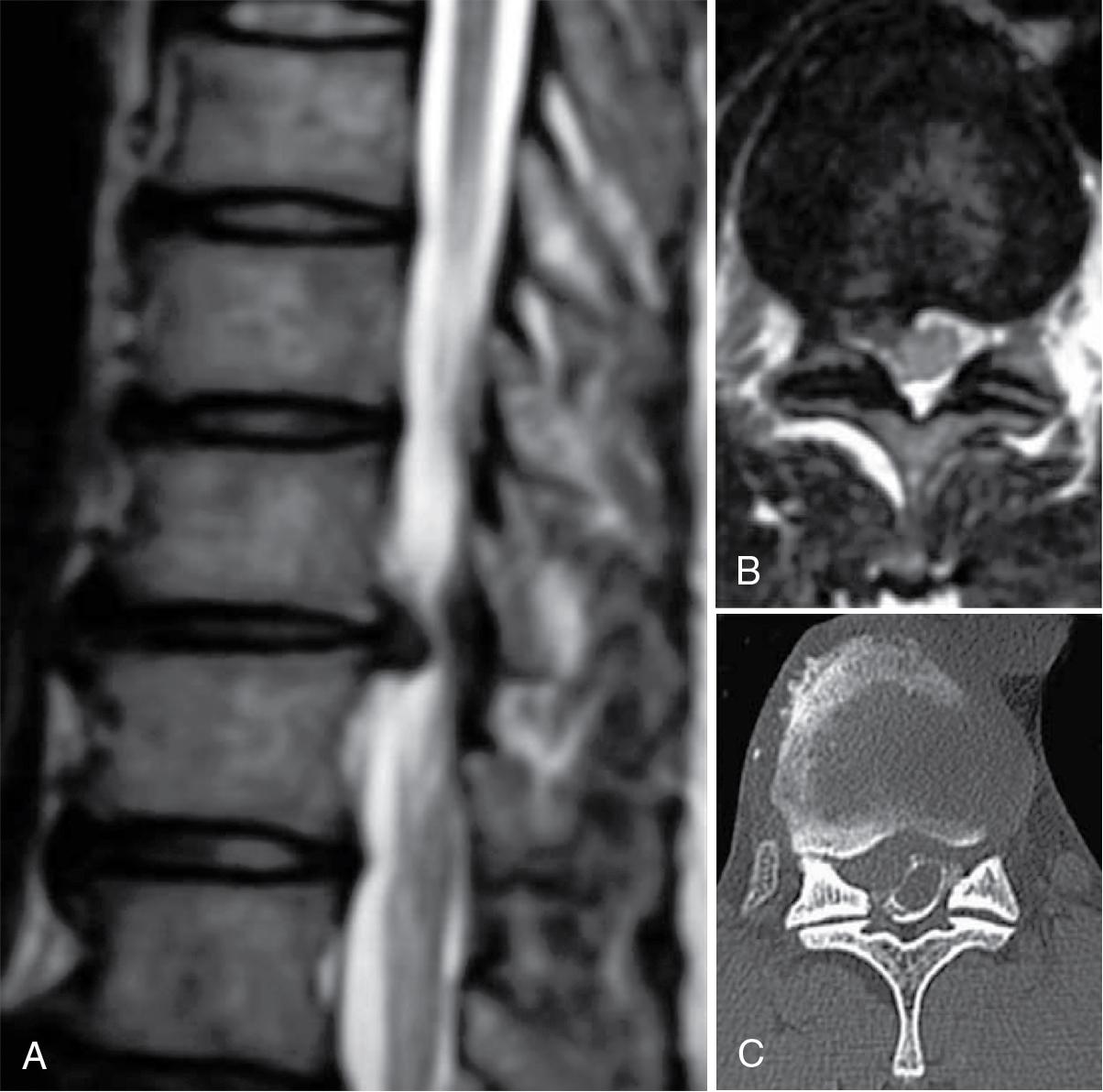Physical Address
304 North Cardinal St.
Dorchester Center, MA 02124
No. The incidence of symptomatic thoracic disc herniation has been reported as 1 per million patients. It is estimated that 0.15%–4% of all symptomatic disc protrusions occur in the thoracic spine. The lower rate of symptomatic disc herniation in the thoracic region compared with the cervical and lumbar regions is attributed to the stability provided by the rib cage. However, magnetic resonance imaging (MRI) and computed tomography (CT) myelogram studies have shown a prevalence of thoracic disc herniation ranging between 11% and 37% based on imaging studies performed in asymptomatic patients. Imaging studies alone cannot be used to select patients for operative treatment because more than 70% of asymptomatic adults will have abnormal anatomic findings on thoracic spine MRI studies (disc herniation, disc bulging, annular tear, spinal cord deformation, or end-plate irregularities).
Peak incidence occurs in the fifth decade. Males and females are equally affected. Degenerative changes are considered to be the major factor responsible for thoracic disc herniation. An association between Scheuermann disease and thoracic disc herniation has been reported. Trauma plays a role as a precipitating or aggravating factor in a small percentage of cases. The clinical presentation is variable and can include axial pain, radicular pain, and/or myelopathy. Axial thoracic pain is typically mechanical in nature but is sometimes confused with cardiac, pulmonary, or abdominal pathology, or referred pain from the cervical spine. Radicular complaints most commonly consist of pain radiating around the chest wall along the path of an intercostal nerve but occasionally may include groin pain or lower extremity pain. Myelopathy may develop as a result of spinal cord compression. Careful examination for upper motor neuron signs can lead to the diagnosis of myelopathy. Findings may include a Romberg sign, Babinski reflex, clonus, ataxic gait, lower extremity motor weakness, loss of rectal tone, or decreased perianal sensation. T1–T2 disc herniations may mimic a cervical disc herniation and lead to intrinsic hand weakness and Horner syndrome. Tandem stenosis with involvement of both the thoracic and lumbar region should be suspected in patients with lumbar stenosis who present with neurogenic claudication and subtle signs or symptoms that suggest myelopathy.
Thoracic disc herniation can occur at any level in the thoracic spine. Disc herniation is most common in the lower third of the thoracic spine (T9–10 through T12–L1), less common in the middle third (between T5–T6 and T8–T9), and least common in the upper thoracic region (T1–T2 through T4–T5). The level with the highest percentage of reported thoracic disc herniations is the T11–T12 level. The increased occurrence of thoracic disc herniation below T8 is attributed to the decreased stability provided to the spinal column by the rib cage in this area. Ribs 8–10 do not directly attach to the sternum but instead attach to proximal ribs by a fibrocartilaginous connection, and ribs 11 and 12 lack an anterior attachment to the sternum and are termed “free-floating” ribs.
Standard plain radiographs should be performed to rule out osseous abnormalities such as spinal tumors, deformities, or fractures. In addition, plain radiographs are essential as an intraoperative reference to help determine if the surgeon is operating at the correct level. MRI is the best imaging modality for assessment of the thoracic vertebra, intervertebral discs, and neural elements. CT can complement MRI as it has utility for determining whether calcification of the disc or posterior longitudinal ligament is present. CT-myelography is useful for assessment of patients who are unable to undergo MRI, and provides accurate assessment of the degree of spinal cord compression, disc calcification, and identification of intradural disc herniation in patients who require surgical intervention.
A thoracic disc herniation is present when disc material extends beyond the posterior margin of the vertebral endplate and encroaches on the space available for the spinal cord and/or nerve roots. Important features to describe include level of herniation, disc location with respect to the spinal canal (central, paracentral, lateral), presence/absence and degree of spinal cord compression, and the presence/absence of calcification within the disc herniation. See Fig. 46.1 .

Become a Clinical Tree membership for Full access and enjoy Unlimited articles
If you are a member. Log in here